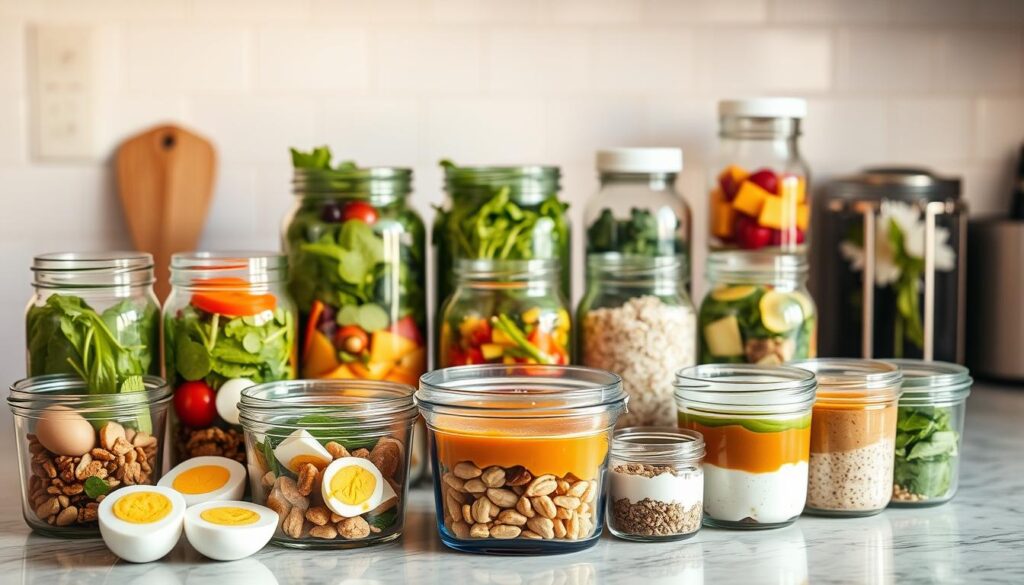What if the fastest way to better blood sugar control isn’t a one size fits all rule but a plan that fits your life as closely as your favorite pair of jeans?
Welcome to Diabetes Plan Diabetes 101 your starting point for a personalized diabetes plan built for everyday routines in the United States. This guide explains diabetes management basics in clear language showing how insulin and glucose work together and why small steady changes can lead to real results in U.S. diabetes care.
We outline the core difference between type 1 and type 2 so you can tailor choices with confidence. You will also preview practical tools used by American dietitians like the Diabetes Plate Method popularized by registered dietitian Emily Weeks RDN LD and simple meal prep habits that support stable numbers without stress.
Backed by the person centered approach championed by Michelle Archer, RD, CDE this series helps you shape goals that reflect your culture preferences, and daily demands. Step by step you will learn how to fine tune your plan strengthen blood sugar control, and make room for real life.
Key Takeaways
- A personalized diabetes plan beats one size fits-all advice by aligning care with your daily life.
- Understanding insulin and glucose is the foundation of diabetes management basics.
- Type 1 and type 2 differ so strategies for blood sugar control must reflect your diagnosis.
- The Diabetes Plate Method and meal prepping offer simple U.S. diabetes care tools you can use today.
- Person-centered coaching improves follow-through and long-term health outcomes.
Understanding Diabetes Basics and Why Personalization Matters
Diabetes starts with how your body handles energy. Food breaks down into sugar that enters the blood. Matching your routine to your body’s signals is the core of personalized diabetes care helping you steer clear of diabetes complications while keeping daily life workable.
How insulin and glucose work in your body
Insulin acts like a key, letting glucose move from blood into cells for fuel. When this process stalls, sugar builds up in the bloodstream. Balancing insulin and glucose through meals activity, and medicines supports steady energy and safer levels through the day.
Simple steps help. Regular meal timing, mindful carb portions, and movement after eating can improve how the body uses insulin and glucose. Small, steady habits often beat big swings.
Health risks of unmanaged high blood sugar
When blood sugar stays high, it strains blood vessels and nerves. Over time high blood sugar risks rise, and diabetes complications become more likely. The heart kidneys, and feet can suffer and vision may blur as tiny vessels weaken.
Keeping numbers stable supports heart kidney nerve protection. Checking patterns and responding early reduces spikes and dips that stress the body.
Personalized care to protect heart kidneys and nerves
Everyone responds differently to the same breakfast, walk, or dose. Personalized diabetes care aligns food activity and medications with your day to day life. It builds heart kidney nerve protection by focusing on consistent routines that fit your schedule.
Meal prepping makes it easier to spot patterns and adjust. When meals are steady, you can see how insulin and glucose respond, then fine-tune choices to lower high blood sugar risks and reduce diabetes complications.
| Focus Area | What to Watch | Personalized Actions | Why It Helps |
|---|---|---|---|
| Glucose Patterns | Fasting, pre meal, and post-meal readings | Adjust carb portions add a 10–15 minute walk after meals | Smoother insulin and glucose response and fewer spikes |
| Meals and Snacks | Timing, fiber, and protein balance | Plan high fiber carbs pair with protein and healthy fats | Improves satiety and lowers high blood sugar risks |
| Medications | Onset and duration of action | Coordinate dosing with meal timing and activity | Enhances heart kidney nerve protection by avoiding swings |
| Activity | Frequency and intensity | Short, regular movement breaks during the day | Improves insulin sensitivity and reduces diabetes complications |
Type 1 vs. Type 2 Diabetes What Changes in Your Plan
Knowing the difference between type 1 vs type 2 shapes daily choices targets, and tools. Your plan balances food movement monitoring and when needed medicines. The aim is steady glucose without disrupting your routine.
Type 1 diabetes: insulin is required for management
In type 1 the pancreas no longer makes insulin. That means insulin therapy is essential from day one. Doses match meals activity, and blood glucose patterns.
Carb counting, smart snacks, and prebolus timing help reduce swings. Pair these steps with clear plans for travel sports, and sick days.
Type 2 diabetes: insulin resistance and lifestyle-focused strategies
In type 2, the body still makes insulin but cannot use it well due to insulin resistance. Early care centers on lifestyle changes for diabetes that improve sensitivity. A balanced plate, regular movement, and weight management support better numbers.
Small shifts add up more fiber fewer refined carbs, and consistent meals. Quality sleep and stress control also help the body respond to insulin.
When oral medications or insulin are added for type 2
If targets are not met with lifestyle changes for diabetes clinicians may add oral diabetes medications. Some plans later include insulin therapy to reach goals safely. The choice depends on A1C daily readings, and how your body responds.
Coordinating doses with meals reduces lows and highs. Keep notes on timing, symptoms, and activity so the care team can fine tune the regimen.
| Focus Area | Type 1 Plan Essentials | Type 2 Plan Essentials |
|---|---|---|
| Core Challenge | No insulin production | Insulin resistance with varying insulin output |
| Primary Therapy | Insulin therapy with meal and basal dosing | Lifestyle changes for diabetes; oral diabetes medications as needed |
| Nutrition Tactics | Carb counting, meal timing to match insulin | Higher fiber, portion balance, steady meal schedule |
| Activity Strategy | Adjust insulin and snacks for exercise | Increase movement to improve sensitivity |
| When to Add or Adjust Meds | Based on patterns, growth, illness, and activity | When targets persist above goal despite lifestyle steps |
Key takeaway for planning: align meals, movement, and monitoring with the distinct needs of type 1 vs type 2, and adjust oral diabetes medications or insulin therapy only as data and goals require.
Setting Clear Actionable Goals for Your Diabetes Plan
Strong plans start with simple choices you can repeat each day. Use SMART diabetes goals to turn ideas into steps you can track. Keep each goal small, time-bound, and tied to what you eat, how you move, and how you measure progress.
Define outcomes: blood glucose management, weight, habits
Begin with clear outcomes that matter to your health. Set blood glucose targets for mornings and before meals, and note how meals affect your numbers. Add weight management goals that focus on steady realistic change.
Lock in habits you can repeat, like a 10-minute walk after lunch or a set breakfast routine. Pair these steps with tracking blood sugar to see how each choice shapes your day.
Align goals with your lifestyle culture and preferences
Choose foods and routines that fit your life. Lean on culturally relevant nutrition so familiar recipes stay on the menu. Use the plate method with tortillas brown rice collard greens tofu, or salmon whatever you enjoy and can prepare often.
Write SMART diabetes goals that match your schedule budget, and kitchen skills. When plans feel natural blood glucose targets become easier to reach.
Tracking progress to refine your plan over time
Log meals you repeat during the week and compare readings. By tracking blood sugar after similar breakfasts or dinners patterns emerge. Use those patterns to tweak portions timing, or ingredients, and to discuss medication timing with your care team.
Review wins and stalls every week. Keep what works adjust what does not, and let weight management and glucose data guide your next set of SMART diabetes goals.
Building Your Eating Strategy with the Diabetes Plate Method
A simple way to stay on track is to use a 9-inch plate as your guide. The Diabetes Plate Method turns complex nutrition advice into a clear balanced plate that supports insulin effectiveness and steadier numbers. It also makes room for culturally sensitive nutrition so your meals reflect the foods you enjoy.
Think quality first: fill your plate with color texture, and flavors that feel familiar while keeping carb control front and center. This helps reduce swings in blood glucose and supports long-term health for your heart kidneys, and nerves.

Read more: Processed meat increases the risk of diabetes
Half non-starchy vegetables, quarter lean protein, quarter carbs
Use the plate as a map. Fill half with non-starchy vegetables like spinach, broccoli, peppers, or cabbage. Add one quarter of lean protein such as chicken breast, tofu, fish turkey or eggs.
Reserve the last quarter for carbohydrate containing foods, keeping carb control in mind with items like brown rice whole grain tortillas, beans, or sweet potato.
This layout forms a balanced plate that moderates glucose rise after meals and keeps you fuller longer.
Choosing colorful fruits and vegetables for variety
Pick a range of colors to boost fiber and micronutrients. Pair leafy greens with tomatoes, carrots, or red cabbage. Add a small serving of fruit like berries oranges or apples to round out flavor and texture without overwhelming carb control.
Season with olive oil herbs, chile, or vinegar to enhance taste while keeping the balanced plate intact.
Adapting the plate to cultural foods you love
Practice culturally sensitive nutrition by mapping favorite dishes onto the same portions. For Mexican cuisine, try half non starchy vegetables with nopales and lettuce, a quarter lean protein like grilled pollo asado, and a quarter carbs with a corn tortilla or a modest scoop of frijoles.
For Indian meals, load half with sautéed okra or cauliflower, add a quarter of tandoori chicken or chana as lean protein, and keep the last quarter to roti or a small serving of basmati rice. The Diabetes Plate Method stays flexible so your balanced plate fits your table and traditions.
Meal Prepping for Consistency and Better Blood Glucose Control
Small, steady habits make diabetes meal prep practical. A clear plan trims guesswork, saves time, and supports even energy. Start with simple tools and repeatable steps that fit your week.
Why batch-cooking supports stable blood sugar and routines
Batch cooking creates consistent portions and timing which helps many people see steadier readings. You repeat meals, track your response, and adjust carbs or protein next time. This routine builds confidence and reduces last‑minute choices.
Planning weekly menus and scheduling prep sessions
Use weekly menu planning to map meals with the Diabetes Plate Method. Set a prep window Sunday afternoon or a midweek evening and stick to it. Chop vegetables portion snacks, and label servings so breakfast lunch, and dinner are ready to grab.
Simple, scalable recipes one pot sheet pan slow cooker
Choose one pot meals sheet pan dinners, and slow cooker recipes to scale up with fewer dishes. A chili with beans and turkey, roasted salmon with broccoli or a chicken and veggie stew can cover multiple days. Keep spices simple and repeat what works.
Investing in airtight microwave safe freezer friendly containers
Store food in airtight, microwave-safe, freezer-friendly BPA-free containers from brands like Pyrex, OXO, or Rubbermaid. Clear lids and date labels help you track portions and freshness. Stack sets by meal breakfast, mains, and sides for easy access.
- Prep staples: cooked grains, roasted vegetables, lean proteins.
- Rotate flavors weekly to prevent menu fatigue.
- Log meals and glucose to fine-tune timing and portions.
With a repeatable plan, diabetes meal prep stays manageable. Keep your weekly menu planning tight lean on one-pot meals, sheet pan dinners, and slow cooker recipes, and pack everything in BPA-free containers to maintain momentum.
Make Ahead Ideas Breakfasts Protein Snacks and Salad Jars
Plan smart, eat well, and keep mornings calm. These make ahead meals work as portable meals for diabetes and fit a busy week. They also support steady energy and predictable glucose patterns.
Use these diabetes breakfast ideas and high-protein snacks to build a routine you can repeat.

Read more: High Protein Vegan Foods amp Snacks
Breakfast options overnight oats egg muffins breakfast burritos
For overnight oats combine old-fashioned oats, unsweetened almond milk, chia seeds, and a few raspberries. Chill in jars for grab and-go breakfasts that travel well.
Bake egg muffins with spinach, mushrooms, and reduced-fat cheddar. Reheat in under a minute. For a freezer-friendly fix roll scrambled eggs, sautéed peppers, and black beans in a 100% whole-wheat tortilla to make breakfast burritos.
These diabetes breakfast ideas anchor your morning and support consistent carb intake across the day.
Protein packed snacks eggs Greek yogurt with berries roasted chickpeas, cheese and nuts
Pre-portion high protein snacks to ease hunger between meals. Hard-boiled eggs keep for the week and pair well with cherry tomatoes.
Choose plain Greek yogurt add blueberries, and a light sprinkle of cinnamon. Roast chickpeas with olive oil smoked paprika, and a pinch of salt until crisp. Pack cheese and almonds for a savory, satisfying bite.
These portable meals for diabetes help curb spikes and make planning easier during long workdays.
Layered salad jars with greens veggies lean proteins grains and seeds
Build salad jars from the bottom up: sturdy veggies first, then grains protein, and leafy greens on top. Add vinaigrette right before eating to keep textures fresh.
Try romaine, cucumbers cherry tomatoes, grilled chicken farro, and pumpkin seeds. Rotate in arugula, roasted peppers tuna, quinoa, and sunflower seeds for variety.
These make ahead meals align with the Plate Method and stay crisp until lunch.
| Make-Ahead Item | Key Ingredients | Why It Works | Portability |
|---|---|---|---|
| Overnight Oats | Old-fashioned oats, almond milk, chia, raspberries | Steady carbs and fiber for even energy | Excellent for portable meals for diabetes |
| Egg Muffins | Eggs, spinach, mushrooms, reduced-fat cheddar | High protein snacks that reheat fast | Easy to pack and eat warm or cold |
| Breakfast Burritos | Eggs, peppers, black beans, whole-wheat tortillas | Balanced macros; freezer-friendly | Great grab-and-go option |
| Greek Yogurt Cup | Plain Greek yogurt, blueberries, cinnamon | Protein plus natural sweetness | Single-serve and mess-free |
| Roasted Chickpeas | Chickpeas, olive oil, smoked paprika | Crunchy, fiber-rich high-protein snacks | Stays crisp in small containers |
| Cheese & Nuts Pack | Cheddar or mozzarella, almonds | Satiating fats and protein | Pocket-friendly packs |
| Salad Jars | Greens, colorful veggies, grilled chicken or tuna, farro or quinoa, seeds | Plate Method balance with crunch | Ideal lunch-ready salad jars |
Sample Meal Inspiration to Kick Start Your Plan
These diabetes-friendly recipes keep prep simple while balancing carbs, fiber, and protein. Batch-cook on Sundays, portion smartly, and rotate flavors to maintain steady energy all week.
Each idea leans on produce-forward swaps and scalable methods. Sheet pans and one-pot techniques save time, reduce cleanup, and support consistent servings.
Spaghetti Squash Stir-Fry with Chicken and Veggies
Use roasted strands in a quick spaghetti squash stir-fry with bell peppers, snap peas, and diced chicken. A splash of low-sodium tamari and sesame oil adds depth without extra sugar.
Portion with a palm-size serving of chicken and heaps of non-starchy vegetables. Finish with sliced scallions and a sprinkle of toasted sesame seeds.
Sheet Pan Chicken with Brussels Sprouts and Apple
Toss sheet pan chicken thighs with Brussels sprouts thin apple wedges, and olive oil. Season with thyme, black pepper, and a pinch of sea salt.
Roast until the sprouts caramelize and the chicken reaches a safe temperature. Serve with a spoonful of warm grain, if desired, to match your plan.
Pasta Primavera with Chickpea Pasta
Choose chickpea pasta for extra protein and fiber. Fold in sautéed zucchini, cherry tomatoes, spinach, and garlic with a light drizzle of olive oil and lemon.
Top with grated Parmigiano-Reggiano and fresh basil. Keep portions steady to support blood glucose targets.
Salmon and Wheat Berry Pesto Salad
Flake broiled salmon over tender wheat berries tossed with basil wheat berry pesto. Add arugula, cucumbers, and shaved fennel for crunch.
Finish this salmon salad with a squeeze of lemon. The mix of whole grains, greens, and healthy fats helps you feel satisfied longer.
- Prep once: roast squash, cook wheat berries, and portion chickpea pasta.
- Store in airtight containers for easy mix-and-match meals.
- Aim for colorful plates that balance protein, fiber, and healthy fats.
Diabetes Plan Diabetes 101
A strong start begins with a foundational diabetes plan that you can live with day to day. Diabetes Plan Diabetes 101 frames the basics in plain language, then turns them into steps you can follow. Think of it as a personalized diabetes roadmap that blends science with real-life habits.
At its core, your body uses insulin to move glucose into cells for energy. When this balance slips, blood sugar rises and puts stress on your heart, kidneys, and nerves. U.S. diabetes education explains these mechanics clearly so you can act with confidence, not guesswork.
For type 1, insulin is essential and timing matters. For type 2, lifestyle shifts lead, and oral medications or insulin may be added as needed. A foundational diabetes plan adapts to both paths while keeping meals movement, and monitoring in sync.

Read more: Benefits of adding high fat foods to meals
Use the Diabetes Plate Method to keep portions steady: half non starchy vegetables, a quarter lean protein, and a quarter smart carbs. Pair that with batch-cooking so meals are ready when you are. This practical rhythm turns goals into routines.
Trusted voices in U.S. diabetes education, including certified experts like Michelle Archer, RD, CDE, emphasize person-centered care. They guide people to build a personalized diabetes roadmap that respects culture, schedule, and preferences while protecting long-term health.
Diabetes Plan Diabetes 101 connects daily choices to lab results and energy levels. With a foundational diabetes plan that reflects your needs, you can fine tune doses, meals, and activity, then adjust as your life changes.
Putting It Together Activity Medications and Monitoring
Bring your daily routine into one loop: steady meals, smart movement, and clear feedback. This is diabetes activity planning in action matching when you eat and move with medication timing while using blood glucose monitoring to guide each step. Keep the cycle simple, repeatable, and tailored to your life.
Pairing movement with meal planning for better insulin use
Plan brief walks or resistance sets after meals to support glucose uptake. Align activity with your meal prep calendar so the rhythm sticks. This helps insulin coordination by reducing post-meal spikes and easing swings during the day.
- Schedule 10–20 minutes of movement after lunch or dinner.
- Use repeat meals to compare how different workouts shift readings.
- Adjust snacks if activity runs longer than planned.
Coordinating oral meds or insulin with your eating schedule
Map medication timing to when you actually eat not when you hope to eat. For type 1, dose around meals and workouts to match real carbohydrate intake and effort. For type 2 coordinate oral agents or added insulin with your regular meal windows to curb spikes and dips.
- Confirm dose-to-meal intervals on the label or with your clinician.
- Anchor meds to consistent breakfast and dinner times.
- Use reminders on your phone or smart watch to keep timing consistent.
Using blood glucose patterns to fine tune your plan
Lean on pattern management to turn data into action. With repeated breakfasts, lunches, and dinners, blood glucose monitoring reveals trends you can trust. If mornings run high, adjust portions, add fiber, or shift medication timing; if afternoons dip, reduce intensity or add a planned snack.
- Log pre-meal and 2-hour post-meal readings across the week.
- Note activity type, duration, and meal details for context.
- Change one variable at a time to confirm what works.
Repeat the cycle: plan act review, and refine protecting heart, kidney, and nerve health through steady insulin coordination and data-driven choices.
Adopting a Person Centered Approach for Sustainable Success
Care that fits your life sticks. Person centered diabetes care draws on your routines culture, and values so daily choices feel natural. When your plan reflects who you are, self-management support becomes easier and your progress is easier to sustain.
Respecting your life experiences to guide your journey
Your history with food, work, family, and stress should shape each step. Align meal prep and the Diabetes Plate Method with the flavors you love and the time you have. This form of person-centered diabetes care turns goals into habits you can keep.
Share what has worked, what has failed, and what matters most. A diabetes educator can use that insight to tailor self management support, from grocery lists to glucose checks without adding friction to your day.
How person-centered care improves outcomes and quality of life
Michelle Archer, RD, CDE, has seen that when people feel heard, they act with confidence. Personalized guidance reduces guesswork and supports steadier blood glucose, which protects energy, sleep, and overall quality of life.
Clear steps, paced to your schedule, help you build wins. Over time, self-management support linked to your culture and routine can ease stress and make problem-solving feel routine instead of urgent.
Building a supportive care team and using trusted resources
Surround yourself with experts who listen: registered dietitians, certified diabetes care and education specialists, pharmacists, and primary care clinicians.
A diabetes educator can translate patterns from your meter or CGM into simple meal and medication tweaks.
- Use consistent meals to spot trends and refine dosing.
- Choose diabetes resources with tested recipes and practical shopping tips, such as Diabetes Food Hub.
- Set short check-ins to review goals and adjust your plan.
With the right people and tools, person-centered diabetes care turns daily choices into a steady path, supported by clear diabetes resources and ongoing self-management support.
Conclusion
This Diabetes Plan Diabetes 101 summary brings the core message into focus: know how insulin and glucose work, respect the risks of high blood sugar, and build habits that you can keep. Type 1 requires insulin every day.
Type 2 often blends lifestyle changes with oral medications or insulin. With a clear grasp of these basics, personalized diabetes management becomes practical, safe, and repeatable.
Food choices drive day-to-day control. The Diabetes Plate Method offers a simple, flexible template for balanced meals that fit your culture and taste. Pair it with sustainable meal prep weekly planning batch cooking, and sturdy storage to keep portions steady and reveal blood glucose patterns.
Make ahead breakfasts, protein snacks and layered salad jars add reliable options that travel well and cut guesswork.
Progress improves when you connect the pieces. Align movement with meals to improve insulin use, coordinate medications with your eating schedule, and review patterns to fine tune doses and carbs.
This person-centered approach championed by experts like Michelle Archer, RD, CDE, respects your lived experience and supports better outcomes and quality of life.
In practice, the path is clear: use the Diabetes Plate Method for structure, rely on sustainable meal prep for consistency, and let pattern feedback guide adjustments.
Keep care personal adaptable and evidence-informed. That is the heart of personalized diabetes management and the promise of Diabetes Plan Diabetes 101 summary for people in the United States who want control that lasts.





